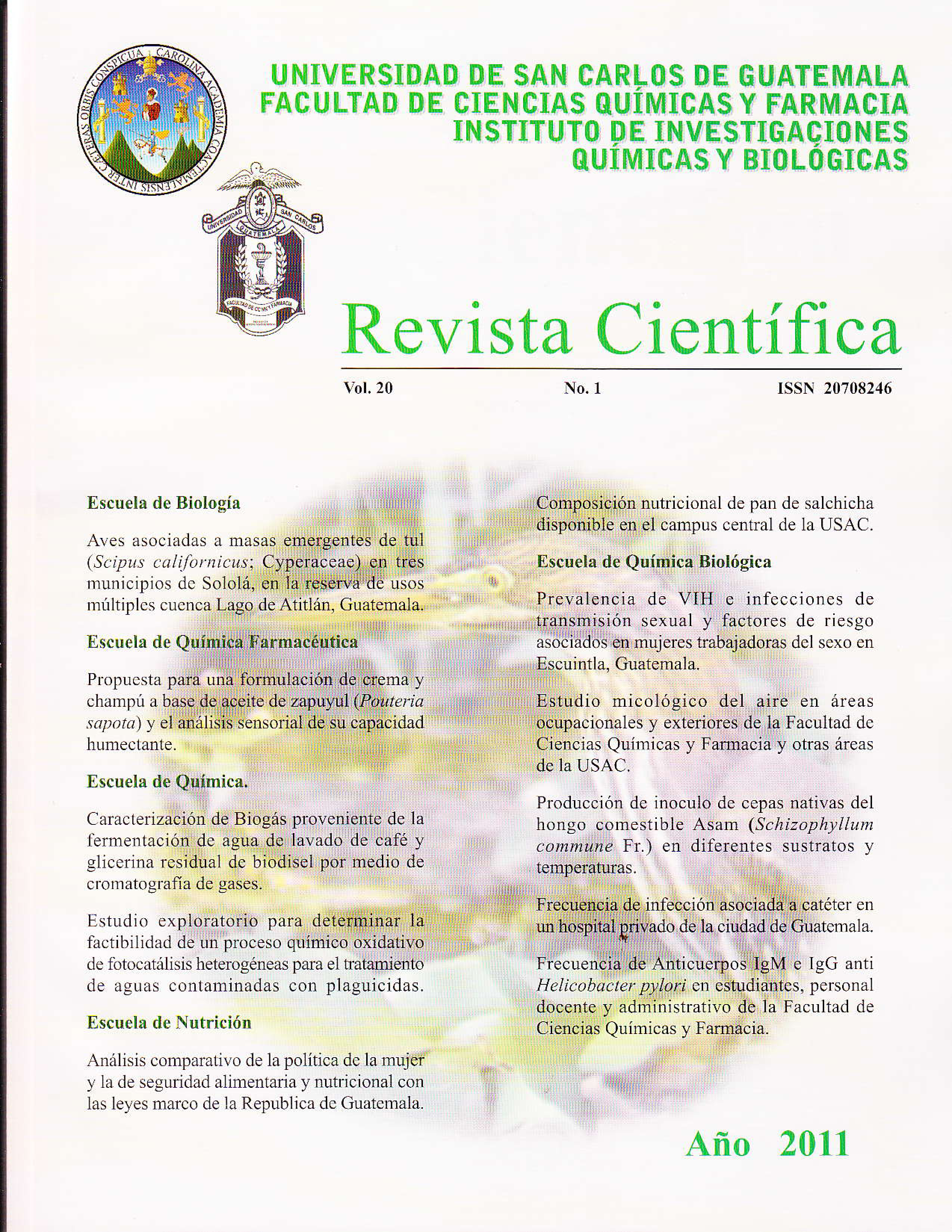Proposal for a Cream and Shampoo Formulation Based on Zapuyul Oil (Pouteria sapota Oil) and Sensory Analysis of its Moisturizing Capacity
DOI:
https://doi.org/10.54495/Rev.Cientifica.v20i1.140Keywords:
Zapuyul Oil, Sensory Analysis, Moisturizing Capacity, Cream and shampoo formulation, CosmeticAbstract
The Purpose of this research was to determine the usefulness of the sapuyulo oil a cosmetic principle for the moisturizing of skin and hair in humans, through a new cream and shampoo formula, and a sensory analysis. The project was divided in 3 phases: The evaluation of the physico-chemical parameters of the sapuyulo oil. the formulation and production of sapuyulo cream and shampoo, with the appropriate quality control, the sensory análisis of the and skin and hair of human beings. This analysis evaluated the moisture, brightness and smoothness provided by sapuyulo oil in the new formula. The sensory analysis consisted of 4 sessions, where people from different groups: placebo and experimental, were interviewed over a period of one month in each session. Of the 80 people who started the study, 26 people dropped out before finishing it and 54 completed it. It was determined that the two parameters evaluated in hair (moisture and brightness) and of the two evaluated in the skin (moisture and smoothness), only the smoothness parameter is statistically significant between the comparison of sapuyulo oil cream and placebo cream, so the sapuyulo oil cream can be used in the cosmetic industry- as a product that gives smoothness to skin
Downloads
References
Bacle, l. (2005). The purpose in sensory Analysis in R&D. Dermocosmetic -. Pierre Fabre Research Institute. Consultado el 20 de Junio dc 2010. Disponible en: http://www.esnetwork.com/fileadmin/inhalte/documents/Conference-ESN-Bacle-pdf
Estrada C., J.M. (2003). Implementación y Validación de una Metodología de Análisis de Accite de Palma para un Laboratorio de Referencia Nacional. Guatemala. Tesis Quimico Farmecéutico. Universidad de San Carlos de Guatemala. Facultad de Ciencias Quimicas y Farmacia. Escuela de Química Farmacéutica.
Flores R., G (2006). Caracterización de la grasa de la semilla de zapote (Pouteria sapota) para evaluar la influencia del tiempo y la temperatura en el proceso de tostado. Guatemala. 57 p. Tesis Químico. Universidad de San Carlos de Guatemala. Facultad de Ciencias Químicas y Farmacia. Escuela de Química.
Guerra P., F. (1946), Métodos de Farmacología Experimental. Organización y Técnicas Cuali y Cuantitativas. México. Editorial Unión Tipográfica Hispano Americana. Págs. 45-54.
Helman, J. (1 982). Farmacotecnia Teórica y Práctica. Tomo VII. CIA. Editorial Continental S.A. México. Págs. 2087, 2089-2091, 2124-2128, 2281, 2282, 2288-2293.
Lachman, L. (1976). The Theory and Practice of Industrial Pharmacy. 2o Edition. Lea y Febiger Philadelphia. Great Britain. Págs. 206-214
Martini, M.C. M. Chivot. (1997). Cosmetología Dermocosmética y Estética. No. 3. Editorial Masson. Barcelona, España. Págs. 26, 64, 65, 69, 70.
Medinilla B. (2001). Manual d e Laboratorio de Farmacognosia. Guatemala. Universidad de San Carlos de Guatemala. Facultad de Ciencias Químicas y Farmacia, Escuela de Química Farmacéutica.
Departamento de Farmacognosia y Piroquímica. Págs. 5-7.
Rigano, L., Boufigli, A. Cosmética Eficaz y Sensorial. - ISPE - Milano. Consultado el 23 de junio de 2010. Disponible en laInterneten: http://www.portalfarma.com/pfarma/taxonomia/gcncral/gpOOOO19.nsf/voDocumentos/30A412D9091E8C8CC12576390041887F/SFile/PON_2409_Dr_Rigano.pdf
Solis, C. R, A. (2004). Caracterización fisicoquímica de la grasa del y el contenido de ácidos grasos. Guatemala. Tesis Químico. Universidad de San Carlos de Guatemala. Facultad de Ciencias Químicas y Farmacia. Escuela de Química.
The United Status Pharmacopeia USP 24, The Nacional Formulary NF 19. General Chapters. General Tests and Assays. Vol. I. II y III.
The United States Pharmacopeia. USP 29. (2006). The National Formulary. NF 24. Pág. 3012
The United States Pharmacopeia. USP 30. (2007). The National Formulary. NF 2 5 . Vol. 1.
Wilkinson, J. B., R. J. Moore. (1990). Cosmetología de Hany. Ediciones Diaz de Santos. S. A. Madrid, España. Págs. 57-80, 475-517. 478-480, 514-517.
Downloads
Published
How to Cite
Issue
Section
License
Copyright (c) 2011 I. Moscoso, P. Garcia, R. Victoria, N. Rodriguez, S. Cruz

This work is licensed under a Creative Commons Attribution 4.0 International License.
Authors who publish with this journal agree to the following terms:
- Authors retain copyright and grant the journal right of first publication with the work simultaneously licensed under a Creative Commons Attribution License 4.0 that allows others to share the work with an acknowledgement of the work's authorship and initial publication in this journal.
- Authors are able to enter into separate, additional contractual arrangements for the non-exclusive distribution of the journal's published version of the work (e.g., post it to an institutional repository or publish it in a book), with an acknowledgement of its initial publication in this journal.
- Authors are permitted and encouraged to post their work online (e.g., in institutional repositories or on their website) prior to and during the submission process, as it can lead to productive exchanges, as well as earlier and greater citation of published work.









